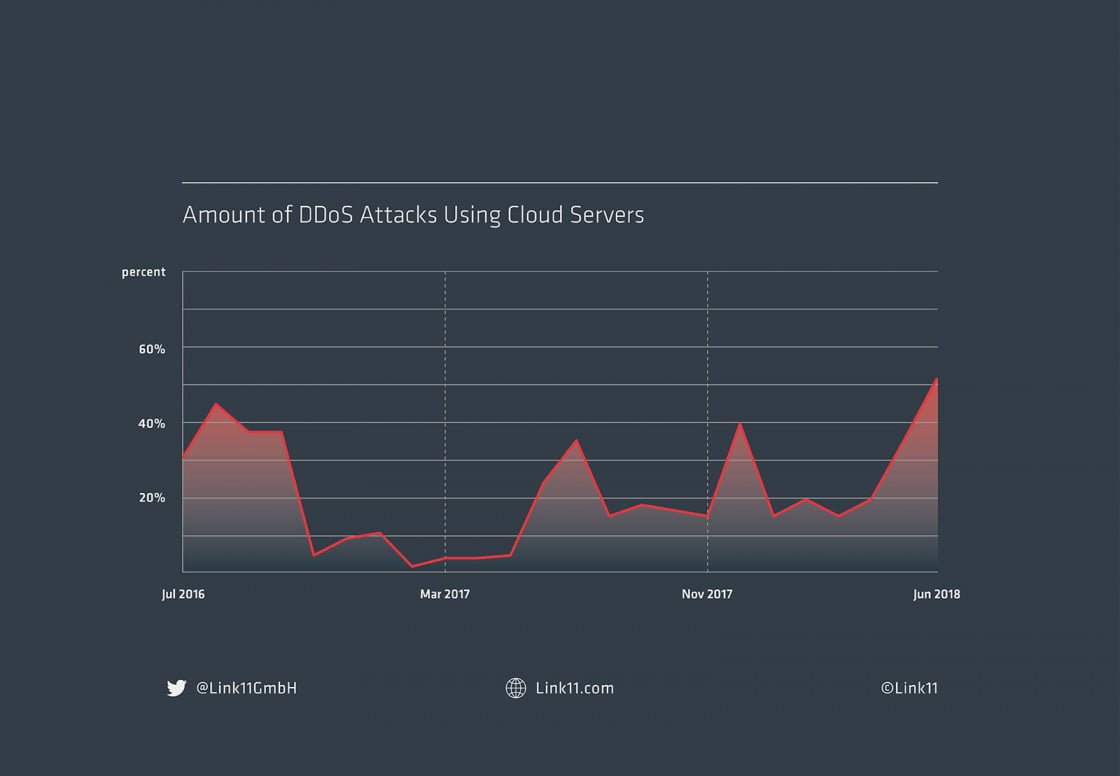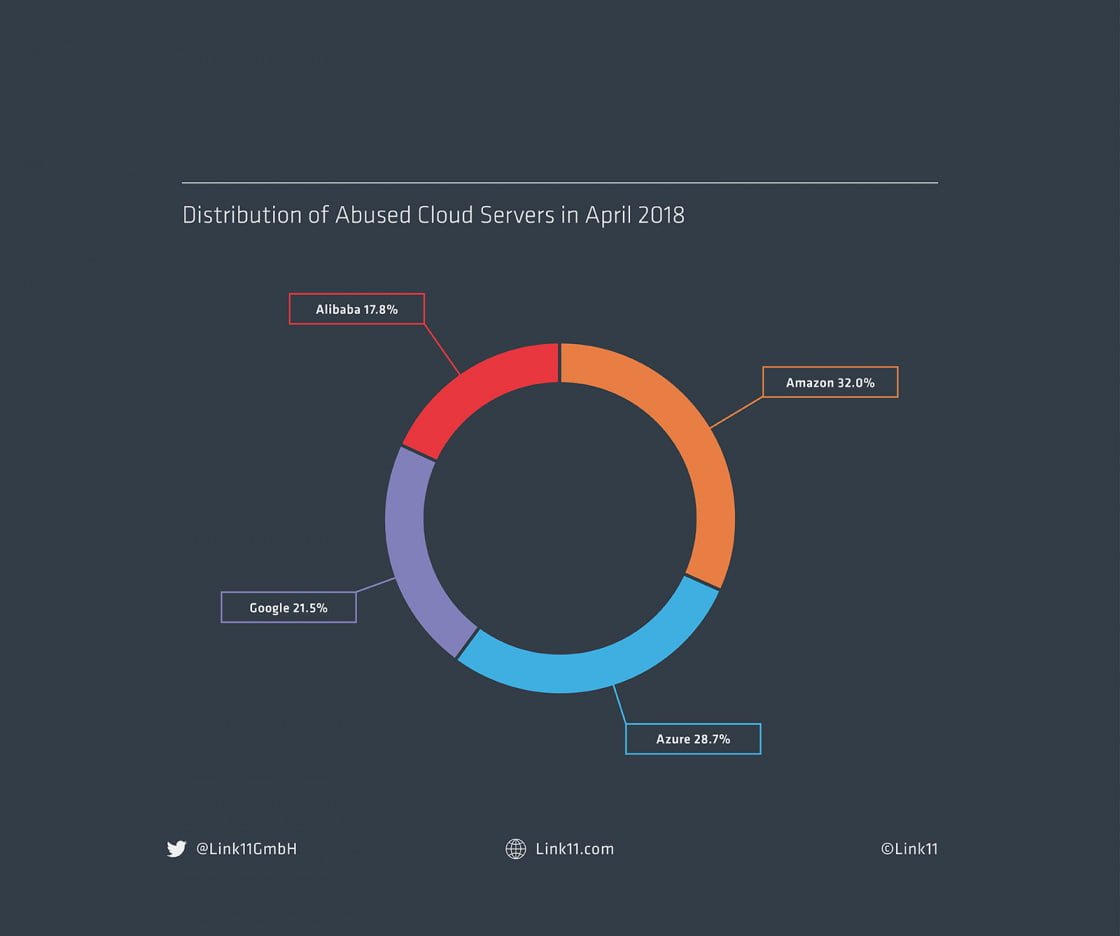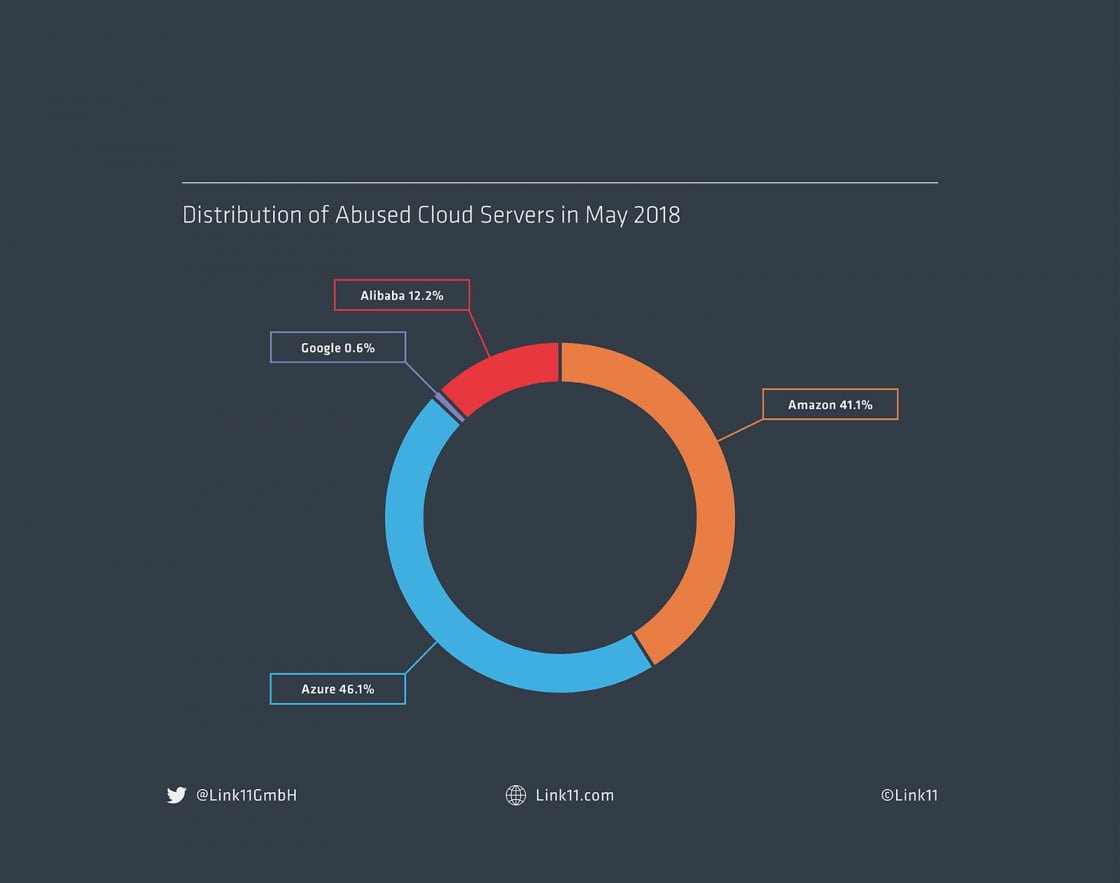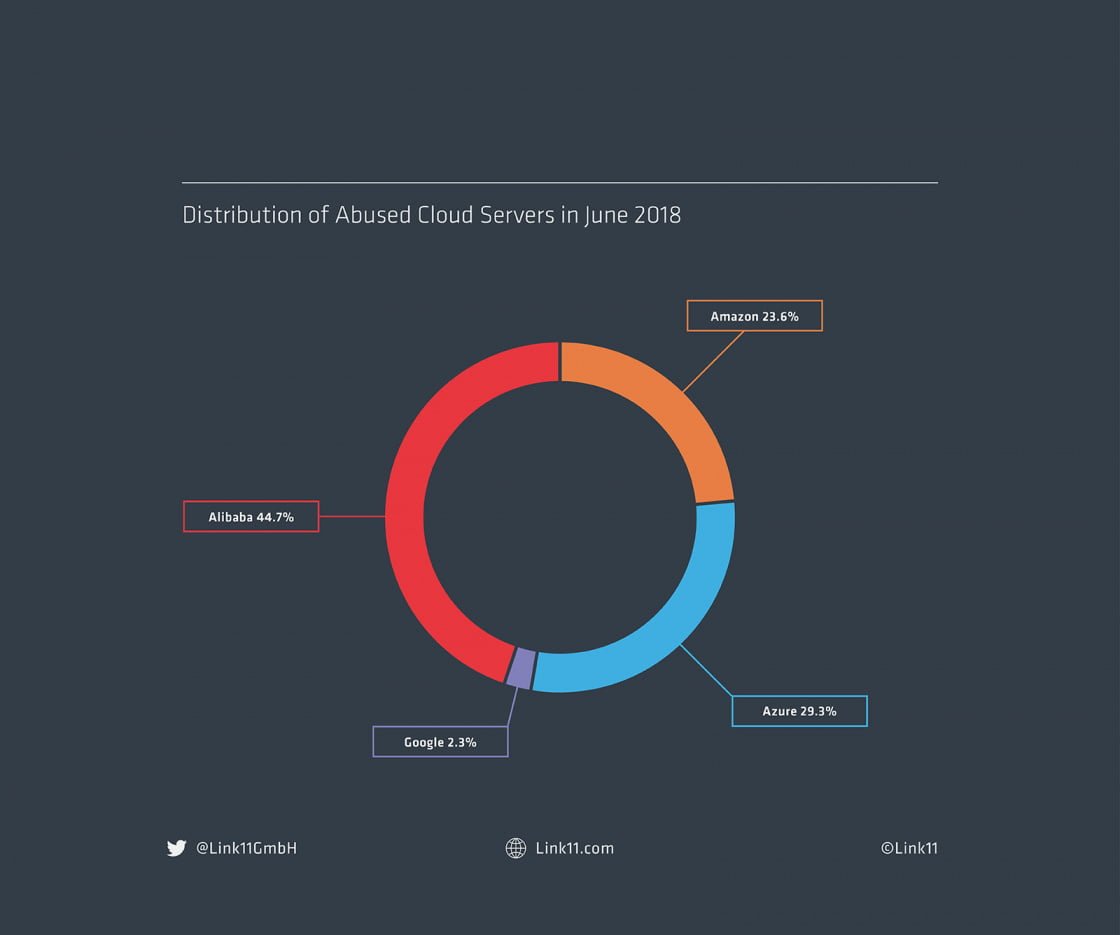Content

Cloud services from leading providers including AWS, Microsoft Azure and Alibaba used in 25% of all DDoS attacks in Europe from July 2017 to June 2018
DDoS attackers are increasingly abusing public cloud services to launch attacks, according to new research from Link11, a specialized European provider in cloud-based anti-DDoS protection. Data from Link11’s Security Operation Center (LSOC) shows that a quarter of all DDoS attacks in Europe in the 12 months from July 2017 to June 2018 used cloud server-based based botnets, compared to 18.5% in the previous 12 months – a 35% increase.
During the 12 months to June 2018, Microsoft Azure was the cloud service most exploited for DDoS attacks, with 38.7% of such attacks using Azure servers on average. Amazon Web Services (AWS) was used in 32.7% of attacks on average, and Alibaba servers used in 17.9% of attacks. Google servers were abused much less often, used in only 10.7% of attacks.
According to Link11, cloud server-based botnets are the ideal platform for launching DDoS attacks. Cloud instances generally offer bandwidths of between 1 and 10 Gbps, enabling attack volumes which can be as much as 1000 times higher than is possible with individual compromised devices such as home routers or IoT cameras. The LSOC reported that the peak attack volumes of these cloud-based attacks exceeded 150 Gbps in May. Cloud servers provide memcached or SSDP services, which amplify attack volumes.
Aatish Pattni, Regional Director UK & Ireland for Link11 said: “The people behind DDoS attacks are embracing the use of public cloud services for the same reasons as legitimate organizations: the services provide flexible, on-demand capacity and resources, and can be provisioned in just a few minutes.
“For threat actors, the benefits are even more compelling because they will often use stolen credit card details and false identities to pay for the services. This makes the perpetrators almost impossible to trace, even though providers such as Amazon are taking strong action against misuse, and asking users to report any suspected abuse of their services.”
To protect against DDoS attacks launched using public cloud services, blocking traffic from these services is not an option for many organizations because they will already be using public cloud as part of their own IT infrastructures.
Instead, organizations should analyze in detail the communication between public cloud services and their own network, and monitor for malicious or unwanted traffic. Ongoing analysis of data traffic, using machine-learning techniques, enables legitimate traffic to be profiled and fingerprinted, so that any changes can be detected quickly and reliably. The malicious traffic can then be filtered out in a granular manner before it can impact on the organization’s business, without blocking legitimate traffic.




